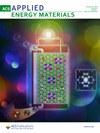Inner loop model predictive control and outer loop PI reference governor for PMSMs with input and state saturation for torque control
Abstract
This contribution considers a torque control scheme consisting of model predictive control (MPC) in the inner control loop together with PI reference governor in the outer control loop and a decoupling feedforward control for an isotropic permanent magnet synchronous machine (PMSM). This innovative approach is known in literature as PI-MPC dual loop control. A particular emphasis is given to the control governor strategy which is the outer loop PI reference governor and allows to regulate the machine in the flux weakening region and is therefore only active for field weakening. In this context the analysis of the stability based on Lyapunov’ approach of the control loop in flux weakening region is shown. The desired currents represent the reference currents for the MPC, which forms the inner control loop. The MPC is adapted using an extended Kalman filter (EKF), which estimates inductance of the electrical system in coordinates by using a bivariate polynomial. Compared measurements with a hardware-in-the-loop (HIL) system show the effectiveness of the proposed control scheme with respect to a standard PI controller in inner loop (PI-PI scheme) in the presence of saturated inputs and state of a PMSM. The proposed MPC uses just an optimal, proportional control and thus avoids windup effects. Measurement results in the presence of input and state saturations show that MPC is working without overshoot in the currents which leads to less needed power in input.

 求助内容:
求助内容: 应助结果提醒方式:
应助结果提醒方式:


